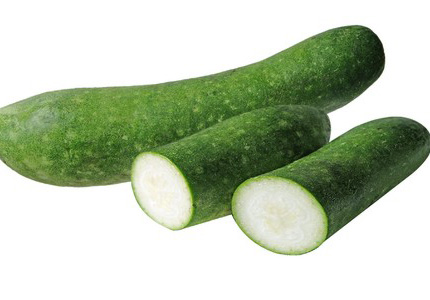
As I’m peeling the skin from a Hairy Melon, I realize what a long way I’ve come from my childhood staples of carrots, corn and peas. More importantly, I realize what a long way my kids have come from where I had been at their ages. They eat more variety of vegetables and fruits than I could have dreamed of. Or rather, had nightmares about.
It took quite some time for me to appreciate different tastes, textures and appearances, but by my early 20s, I became open to venturing beyond the beanstalk.
With my children, it’s a very different story. The more unusual the food, the more likely they are to try it. This past summer, my husband’s overzealous sprinkling of carrot seeds in the garden resulted in a bumper crop of intertwined, gnarled bright, orange roots that the kids would endlessly fight over. “I want the twisty one! I want the creepy one!” So much for those perfectly shaped, pre-washed, plastic-packaged baby carrots that they now refuse to eat.
I also learned that presentation goes a long way. I carve little faces into my son’s red and orange peppers. I scallop the edges of zucchini slices. I stuff little green grapes into large red grapes. In some ways, preparing food is becoming as much of a craft as an art.
But back to my Hairy Melon… Also, known as Mo Qua, Mo Gwa and Fuzzy Melon, I opt for “Hairy Melon” because for some strange reason, that will have the most appeal for my kids. Hairy Melon resembles a zucchini in shape, size and colour. But unlike zucchini, it is adorned with white-coloured specks. But the really good part is that it’s covered with some fine fuzz for the kids to wrap their little fingers around.
While the fuzz is fun for them to feel, I wouldn’t want to eat it, so I always take care to peel the skin, revealing a creamy, white flesh that is firm and spongy like eggplant. Inside the centre are edible seeds, which can be removed if stuffing the Hairy Melon with meat or other vegetables. I hate to say I use Hairy Melon as a “substitute” for eggplant or zucchini, but its delicate flavour lends itself well to the ways in which summer squashes are prepared. Stir-fried; stuffed and baked; marinated and grilled. Mmmm!
Once Hairy Melon matures, the skin become thicker and loses its fuzz, while the flesh develops a bitter flavour, which is best suited to soups and stews.
When purchasing Hairy Melon, select ones that are heavy for their size, with unblemished skin. Hairy Melon contains Vitamin C and when eaten raw, has just 15 calories a cup.
Now… where can I get my hands on some Ugli Fruit?
